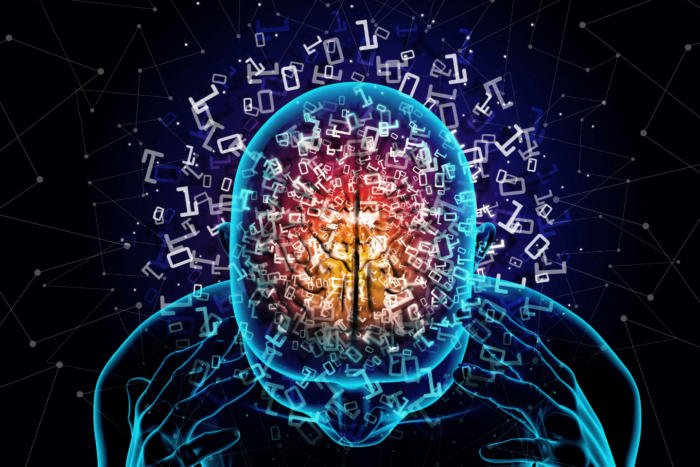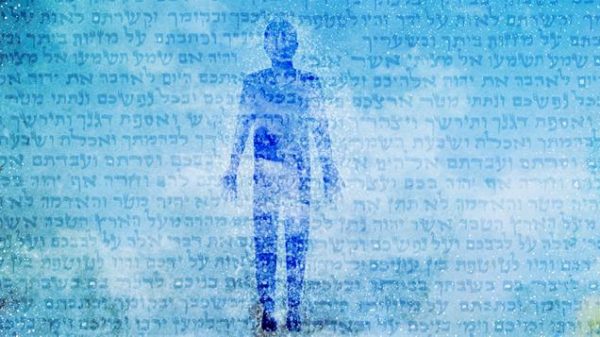Click here to download PDF
How did Golus start?
This week’s Parsha starts without any break separating it from last week’s Parsha. therefore, it’s called a “Parsha Setuma”- a blocked Parsha as there isn’t that traditional space between the Parshas. Rashi addresses the issue and says: “why is this Parsha “Setuma”- blocked? Because Yaakov Avinu passed away in this Parsha the eyes and hearts of the Jewish people were “blocked” from the oppression of the subjugation for they began to subjugate them”. There are many difficulties with this Rashi. First of all, the subjugation only began after all the heads of tribes died as it says in next week’s Parsha. When working hard building pyramids, it is your arms and legs and back that hurt, not your eyes and heart! What does it mean the eyes and hearts were “blocked” and what does that have to do with the lack of space between Vayigash and Vayechi?
Blocked?
Rashi offers a another pshat and says: “Yaakov wanted to reveal the “Ketz” – end of the golus to his sons and it was “blocked” from him”. Here too the term “blocked” seemingly is not accurate. It should say it was “hidden” or “withdrawn” from him. What does it mean that it was “blocked” from him? How does this correlate to the fact that there’s just no open space between the end of last week’s Parsha and this week’s Parsha?
Eyes & Heart
There is an interrelationship between the eyes and the heart. After the passing of Yaakov, the “eyes” and “heart” were “blocked”. The Torah commands us to not stray after our heart and after our eyes (Bamidbar 15:39). We find this attributed metaphorically to Hashem and his relationship to the Beis HaMikdash Shlomo built. Hashem appears to Shlomo after he completed the Beis HaMikdash and says (Melachim 1:9:3) “… I have sanctified this house that you built for Me to place My Name there forever and my eyes and heart will be there all the days”. What is the interrelationship between “Eyes” and “Heart” and how does it fit all these different contexts we have just listed?
Getting Real
To be to be “real” with something requires two steps. It has to be accepted as fact, as opposed to theory, which means it needs to be observed as “seeing is believing”. After the realization that it’s fact it still needs to be processed and understood. You do not know how to relate to the fact until you understand its meaning. The eyes receive information and establish something as fact and the heart processes that fact and establishes its meaning and significance. Generally, we first observe something and then we try to make sense out of it. It doesn’t necessarily have to go in that order. Sometimes we have preconceived notions that taint or bias the way we look at things. The Sifrei on the prohibition to not stray after our hearts and after our eyes points out that heart was mentioned before eyes and raises the point that there are blind men that do bad things also! Therefore, the Sifrei establishes that a person could have bad character traits or lusts in his heart independent of what he sees, and those bad drives will influence the way he looks at things. However, Rashi brings another Chazal “the eye sees, and the heart Covets”. Both are true. It’s a “two-way street” between these two components
Connection
The prohibition to guard our heart and eyes is so as to not be connected to evil in any way! See no evil and think no evil. If we protect both these “organs” we will not be connected to evil in any way. What Hashem is expressing when he says metaphorically speaking, that his “eyes” and “heart” will be on the Beis HaMikdash “Eyes” means supervise what goes on there, do Miracles there, and take note of all the Divine service that we do. “Heart” means that He will have love for the Beis HaMikdash and the Jewish people who do service there. It means that Hashem is totally connected to the Jewish people, watching over them and loving them. Having one without the other would mean would be a partial disconnect. To be fully connected is to observe and care.
Daas
There is another word for this total connection that is formed by “eyes” and “heart” together: “Daas”- knowledge. “Daas”-knowledge is not to be confused with wisdom and understanding, it’s a composite of both and yet beyond both. To have “Daas” means to be connected like love. “And Adam “Yada”-Knew Chava his wife”(Bereishis 4:1), “….for “Y’dativ”– I know him” (Bereishis 18:19 see Rashi there), “…now “Yadati” -I know that you are G-D fearing…”(Bereishis 22:12 see Rashi there), in all these instaces it means “connection” & “Love”.
It’s all in the mind
With this we could decode two amazing statements of Chazal: “Anyone who lacks “Daas” will ultimately be exiled from his place” and “Anyone that has “Daas” it is as if the Beis Hamikdash was rebuilt in his days” (both in Sanhedrin 92A). The Maharal explains that man’s foothold in reality is his perception of reality. If man is like a tree, his roots are his head. The person who lacks “Daas” is “reality challenged” and will not be able to keep his grip on his place in reality. The Beis Hamikdash is the place of our connection to Hashem. Golus is finally over when the Beis Hamikdash is rebuilt as that’s when our connection to Hashem is fully reestablished. A person who has “Daas” and is totally real and connected with the idea that Hashem is the absolute King and all that happens in the world comes from Him and there is no other force other than Him – for that person it is as if there is a Beis HaMikdash! That person is connected to Hashem the same way we were connected when we had a Beis HaMikdash. The seforim bring a saying of the Baal Shem Tov: “Where is man? where his thoughts are!” The Ramchal writes that if only a certain critical number of Jews would attain this clarity of perspective and get real and connected to the truth that Hashem alone is the absolute being and absolute power and ruler over all the Geulah would happen instantly! (Daas Tevunos siman 40; page 27 in the Freidlander edition)
Thought Break
What is the significance of the breaks that generally are between the parshas? Rashi at the very beginning of Vayikra addresses this and brings the Chazal: “what purpose do the breaks serve? To give space for Moshe to contemplate between parsha and parsha and between topic and topic”. The breaks are for contemplation! If we rush through life we don’t have time to process what we’re observing which is not just a lack of understanding if it’s even a lack in the observation itself! That’s what Rashi means the “eyes and heart are blocked” means there is no time and space for contemplating in order to thoroughly observe and process. When Yaakov was alive he was our guiding Light. He gave us perspective and understanding. With his death we lost this clarity and connection. That’s where golus starts –“He who lacks Daas ultimately is exiled from his place” – the exile and the subjugation started with our loss of connection to the truth. Even if the physical hardships only began later we already lost our position with the loss of the connection of clarity that Yaakov provided!
Clarity behind the block
Yaakov wanted to reveal the “Ketz” to show that the hardship is something very finite and temporary and that clarity would helps us cope and keep the faith. This clarity was not taken from him, he was just “blocked” from sharing it with the Jewish people. It’s just behind the barrier all we need to do is “open that barrier” by taking time to contemplate the truth and we can tap in and reignite that faith! If only a critical number of Jews would do it at the same time we would be redeemed immediately!
Shabbos & Geula
With this we could understand the power of Shabbos that Chazal tell us in many different forms that if the Jewish people would only keep Shabbos correctly they would be redeemed. Shabbos is that “taking time out to contemplate”! This is the secret that the Torah only prohibited “Meleches Machsheves”- any creative activity that requires thought. We are supposed to be totally free from our distracting work and worries that occupy our mind in order to have that break contemplate the Truth of reality! That’s the secret the Navi (Yeshayahu 58:13-14) says that if we observe the Shabbos properly including not talking about anything has to do with the work week – which means our minds are totally on Shabbos to contemplate Hashem and his Torah – I will feed you the inheritance of Yaakov! We don’t just observe Shabbos with her arms and legs, we observe Shabbos with our minds also! That is fully actualized through the rabbinic prohibition of not speaking about anything work-related, and then we get the “inheritance of Yaakov” – the clarity that he had that is blocked off to. We can overcome that block by the “break” provided by Shabbos and tap into the power of clarity of Yaakov Avinu!










